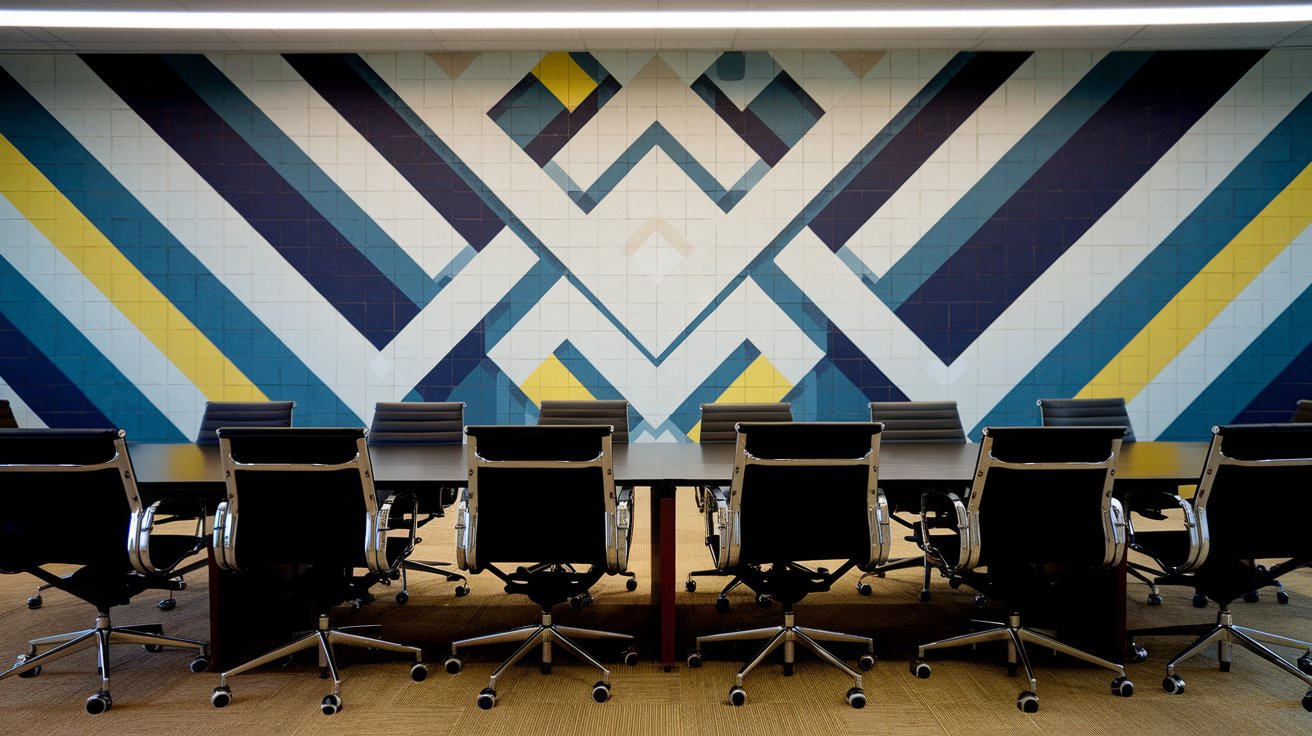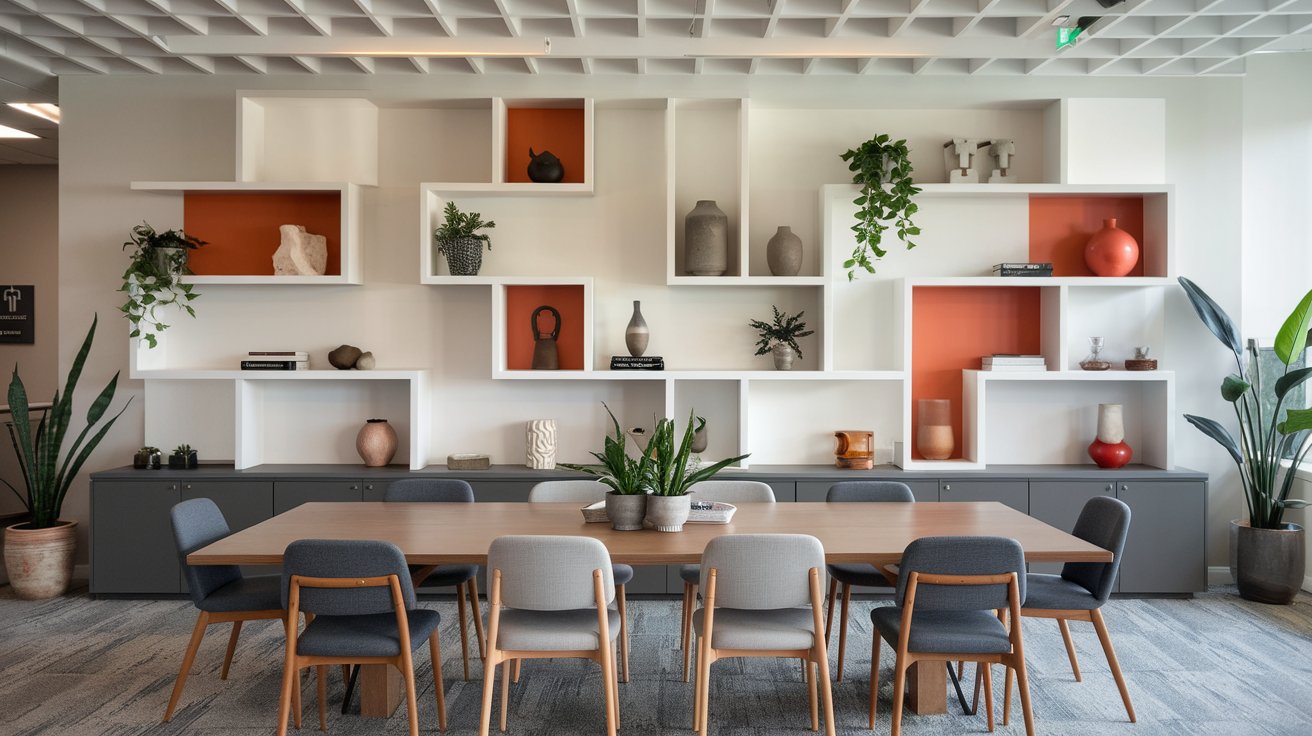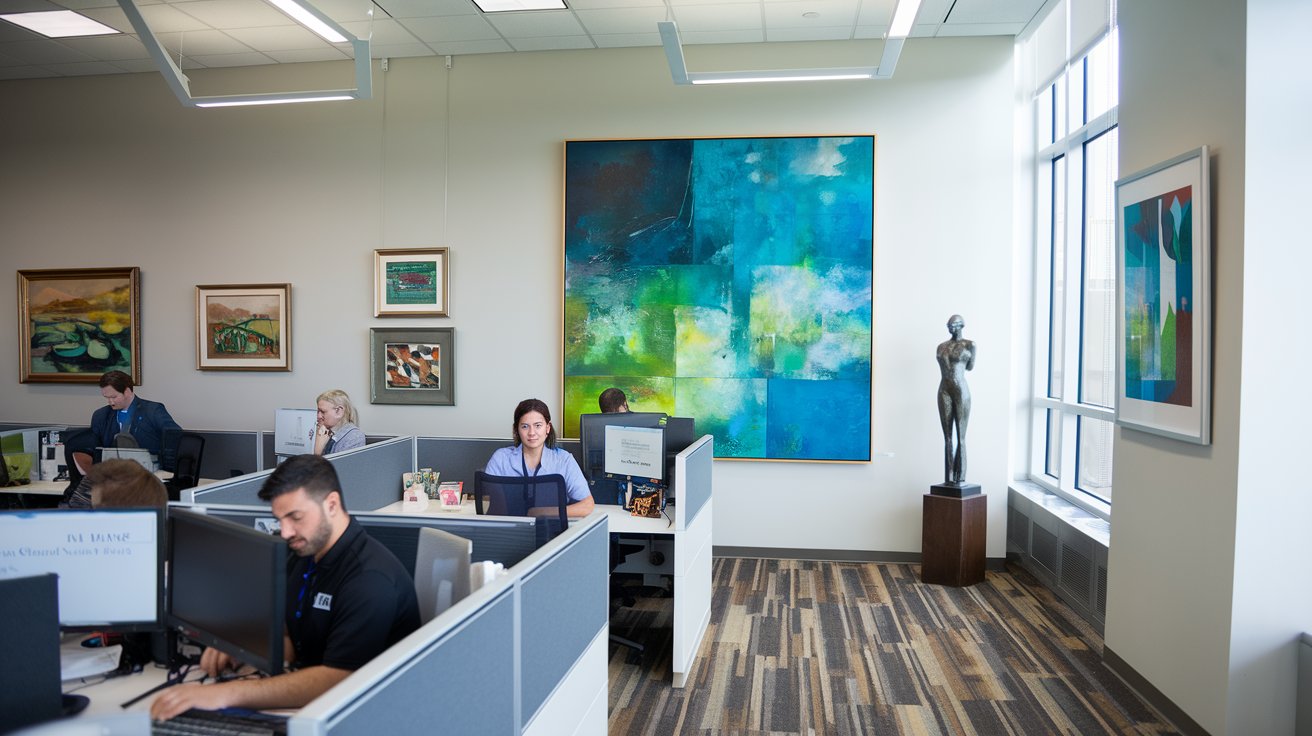Incorporating Local Artisanship in Corporate Interiors
Picture a sleek corporate office where handwoven tapestries from Rajasthan line conference room walls, reclaimed teak desks carved by Kerala woodworkers anchor workstations, and ceramic light fixtures molded by Tamil Nadu potters cast a warm glow over collaborative spaces. This isn’t a boutique hotel—it’s the future of artisanship in corporate interiors, a movement redefining sterile office environments into culturally rich, soulful spaces.
Gone are the days when corporate design meant mass-produced furniture and generic decor. Today, forward-thinking companies are turning to local artisans to infuse authenticity, sustainability, and storytelling into their workplaces. Artisanship in corporate interiors isn’t just about aesthetics—it’s about fostering community connections, boosting employee pride, and creating environments that inspire innovation. Let’s explore how blending traditional craftsmanship with modern design can transform your workspace.

The Untapped Benefits of Artisanship in Corporate Interiors
Artisanship in corporate interiors offers a triple win: it uplifts local economies, strengthens brand identity, and creates healthier workplaces. Here’s how:
1. Boosts Employee Wellbeing and Productivity
Studies show that employees in spaces with natural materials and art report 15% higher productivity and 20% lower stress levels. Handcrafted elements—like a hand-loomed rug or a wooden partition carved with regional motifs—add warmth and texture, making sterile offices feel welcoming.
Example: Adobe’s Noida office features Madhubani murals by Bihar artists, a design choice employees credit for sparking creativity during brainstorming sessions.
2. Strengthens Brand Storytelling
A conference table made by Jaipur’s marble artisans or lobby sculptures by Odisha’s metalworkers silently communicates your brand’s commitment to sustainability and cultural preservation.
Case Study: FabIndia’s corporate offices use hand-block printed textiles and terracotta decor, mirroring their brand ethos of “celebrating India.”
3. Supports Local Communities
Partnering with artisans sustains dying crafts. For instance, Mumbai’s The Rug Republic collaborates with rural weavers to create office rugs, providing steady income to 500+ artisans.

How to Seamlessly Integrate Artisanship into Corporate Design
Artisanship in corporate interiors requires thoughtful curation. Here’s how to blend tradition with functionality:
1. Start with High-Impact Zones
- Lobbies: Install a statement piece, like a Warli art mural or a Dhokra metal sculpture.
- Meeting Rooms: Use handcrafted conference tables (e.g., rosewood from Karnataka) or brass pendant lights.
- Breakout Areas: Add handwoven seating or pottery planters.
2. Choose Functional Art
- Acoustic Panels: Jaipur’s quilted textiles reduce noise while adding color.
- Room Dividers: Bamboo lattice screens from Assam offer privacy and airflow.
- Lighting: Terracotta lamps from Pondicherry cast soothing, natural light.
3. Collaborate, Don’t Exploit
- Work directly with artisan cooperatives like Chetna Organic or Dastkari Haat Samiti to ensure fair wages.
- Let artisans interpret your brand’s vision—don’t dictate rigid designs.
Pro Tip: Google’s Hyderabad office partnered with Telangana weavers to create fabric wall art depicting local folklore, blending tech and tradition.

Overcoming Challenges in Blending Craft and Commerce
While artisanship in corporate interiors has clear perks, businesses often face hurdles:
- Cost vs. Mass Production
Handcrafted pieces can cost 2–3x more than factory-made items.
Solution: Prioritize key areas (e.g., lobby, leadership offices) and mix artisanal items with sustainable bulk buys.
- Scalability and Consistency
Artisans may struggle to replicate the same design across multiple offices.
Solution: Embrace slight variations—they add authenticity.
- Maintenance
Delicate materials like untreated wood or hand-painted murals require care.
Solution: Seal surfaces with protective coatings and train cleaning staff.
Real-World Success Stories
1. Airbnb’s Gurugram Office
- Artisan Touch: Rajasthani blue pottery vases, Kashmir walnut wood desks.
- Impact: Employees report feeling “rooted in Indian culture,” boosting归属感.
2. Infosys’ Pune Campus
- Artisan Touch: Warli art murals depicting teamwork, bamboo ceiling panels.
- Impact: Reduced noise complaints by 40% while supporting tribal artists.
3. The Two Square’s Office Makeover
- Artisan Touch: [Custom example, e.g., “Channapatna wooden desks, Kutch embroidered cushions”].
- Impact: [Specific result, e.g., “Improved employee retention by 25%”].
The Future of Artisanal Workspaces
The next wave of artisanship in corporate interiors is tech-meets-tradition:
- Digital Craft: Use AR to showcase artisan stories behind decor (scan a mural to watch its creation).
- Circular Design: Partner with artisans to upcycle office waste into decor (e.g., paper maché from old documents).
- Global Localism: Source crafts from overseas branches (e.g., Mexican Talavera tiles in a Delhi office).

Conclusion: Crafting Purposeful Spaces with The The Square
Artisanship in corporate interiors isn’t about filling spaces with pretty objects—it’s about creating environments that tell stories, honor heritage, and inspire people. Whether it’s a hand-carved desk that sparks a client’s curiosity or a woven partition that becomes a conversation starter, these touches transform workplaces into living narratives.
At The Two Square, we specialize in weaving local craftsmanship into corporate DNA. Our team connects you with artisans, manages logistics, and ensures every piece aligns with your brand’s vision. Ready to trade sterile for soulful? Let’s build a workspace that’s authentically yours.


